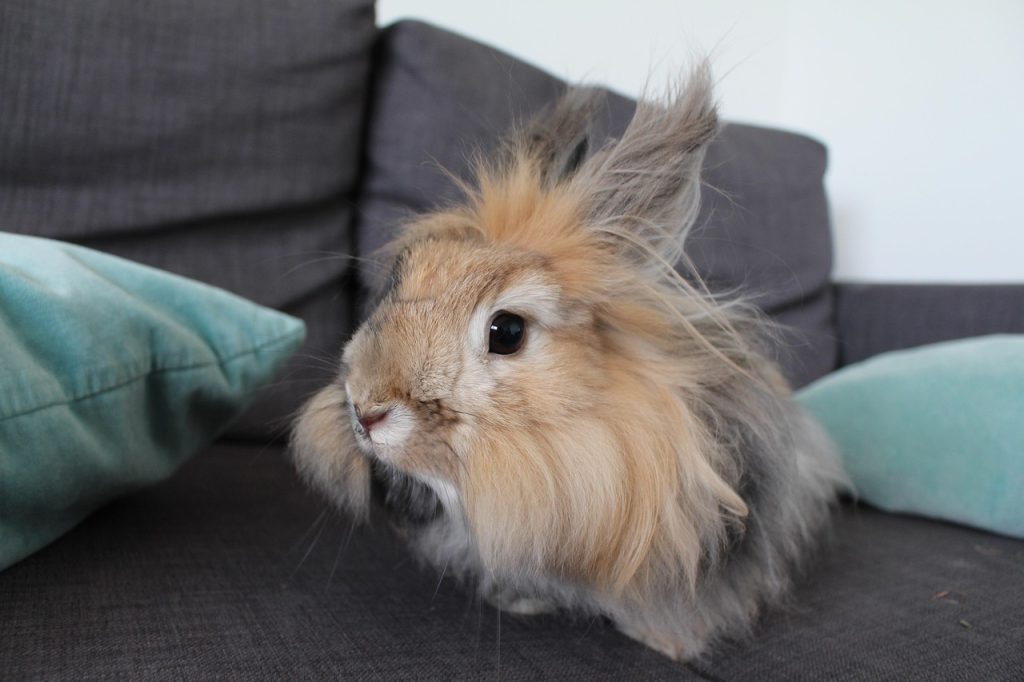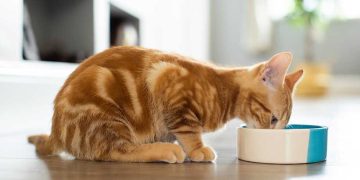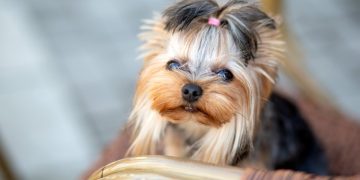Training Angora rabbits can be a rewarding experience for both you and your pet. While they are known for their soft and beautiful coats, Angora rabbits are also intelligent and can learn a variety of behaviors, from litter training to responding to simple commands. However, training a rabbit requires patience, consistency, and a deep understanding of their natural instincts and behaviors. This article will walk you through the essential steps for training your Angora rabbit, addressing both basic training techniques and more advanced tricks.
1. Introduction: The Importance of Training for Angora Rabbits
1.1. Why Train Your Angora Rabbit?
Training your Angora rabbit not only makes life easier for you but also improves your rabbit’s overall well-being. A well-trained rabbit is more manageable, happier, and healthier. Here’s why training is essential:
- Improves Communication: Understanding what your rabbit needs and wants can make interactions smoother and more enjoyable.
- Prevents Destructive Behavior: Rabbits can chew on furniture or dig excessively when bored or anxious. Training helps prevent these behaviors.
- Strengthens Bonding: Training is an excellent opportunity to spend quality time with your rabbit, enhancing your bond and trust.
- Health and Safety: Litter training and learning basic commands can help keep your rabbit’s living space tidy and safe.
2. Understanding the Nature of Angora Rabbits
2.1. Temperament and Intelligence
Angora rabbits, like all rabbits, are prey animals. This means they have an instinctive wariness of predators and are generally more cautious than some other pet species. However, they are also quite intelligent, social, and capable of learning.
- Natural Instincts: Angora rabbits may be more reserved than some other breeds, but with patience, they can develop a strong bond with their owners.
- Trainability: While not all rabbits are equally motivated to learn, Angoras are often very trainable due to their calm and curious nature.
- Sensitive to Stress: Rabbits are sensitive to stress, and training methods need to be gentle and positive to prevent anxiety or fear responses.
By understanding these aspects of their temperament, you can tailor your training approach to suit their needs.
2.2. The Role of Positive Reinforcement
Rabbits respond best to positive reinforcement methods, meaning that rewarding good behavior is far more effective than punishing bad behavior. Angora rabbits are motivated by food and attention, so these can be used as rewards during training.
- Reward-Based Training: Offering treats, affection, and praise when the rabbit performs a desired behavior strengthens the connection between the action and the reward.
- Avoid Punishment: Never use physical punishment or harsh scolding. Rabbits are sensitive creatures, and negative reinforcement can lead to fear, anxiety, or aggressive behavior.
3. Basic Training for Angora Rabbits
3.1. Setting Up a Safe and Quiet Training Area
Before starting any training session, it’s important to create a calm environment. Training should take place in a quiet, distraction-free space where your rabbit feels safe.
- Quiet Room: Choose a room that’s away from loud noises, other pets, or distractions that could make your rabbit anxious or distracted.
- Non-Slip Surface: Make sure the area is safe, with a non-slip surface for the rabbit to stand on. This helps the rabbit feel secure during training.
- Low-Stress Environment: Try to train your rabbit at a time when they are calm—typically after a nap or playtime, when your rabbit is more likely to be receptive.
3.2. Litter Training
Litter training is one of the first steps to making life with your Angora rabbit easier and cleaner. Fortunately, rabbits are naturally inclined to use a litter box if it’s placed in the right area.
- Step 1: Choose the Right Litter Box: Opt for a large, low-sided box to make it easy for your rabbit to enter and exit. Avoid using clumping litter, as it can be harmful if ingested.
- Step 2: Location, Location, Location: Place the litter box in the corner of the rabbit’s enclosure or where your rabbit already tends to urinate or defecate.
- Step 3: Reward Success: Whenever your rabbit uses the litter box, immediately reward them with a treat or praise.
- Step 4: Clean the Box Regularly: Keep the litter box clean, as rabbits are more likely to use a tidy box. This also helps prevent odors and bacteria buildup.
3.3. Basic Commands: “Come,” “Sit,” and “Stay”
Training your Angora rabbit to respond to basic commands can be very satisfying, and it’s a great way to engage with your pet. Here’s how to teach them these simple behaviors:
- Teaching “Come”:
- Hold a treat in your hand and call your rabbit’s name or say “come.”
- When they approach you, immediately reward them with the treat.
- Repeat several times, gradually increasing the distance between you and your rabbit.
- Teaching “Sit”:
- Hold a treat above your rabbit’s nose, then move it upward and back, encouraging them to sit down.
- Once the rabbit sits, reward them immediately with the treat.
- Repeat several times in a quiet area, rewarding them for sitting on command.
- Teaching “Stay”:
- Get your rabbit into a sitting position, then hold your hand up and say “stay.”
- Reward them for staying still for a few seconds, gradually increasing the duration.
- Repeat the command, always rewarding them when they stay in place.
3.4. Training to Accept Handling
Many rabbits, including Angora rabbits, can be a bit skittish when it comes to being picked up or handled. However, with gentle, consistent training, you can teach your rabbit to be more comfortable with being touched and held.
- Step 1: Start Slow: Begin by gently petting and talking to your rabbit, letting them get used to your touch.
- Step 2: Pick Up with Care: When you’re ready to pick up your rabbit, support their back and hind legs firmly but gently.
- Step 3: Gradual Training: Start with short sessions and gradually increase the amount of time you hold your rabbit, always rewarding them with a treat after each session.
- Step 4: Respect Boundaries: If your rabbit resists handling, don’t force them. Instead, try again later, using calm, positive reinforcement.

4. Advanced Training for Angora Rabbits
4.1. Teaching Tricks and Fun Behaviors
Angora rabbits, like many rabbits, can learn fun tricks and behaviors with patience and consistency. Here are a few tricks to consider:
- “Hop Through a Hoop”:
- Place a hoop on the ground and encourage your rabbit to hop through it by holding a treat inside the hoop.
- Reward them when they hop through the hoop.
- Gradually raise the hoop to get your rabbit to jump higher.
- “Spin”:
- Hold a treat in front of your rabbit and slowly move it in a circle.
- Reward your rabbit as they follow the treat and spin in a circle.
- Add the verbal cue “spin” once they start following the motion.
- “Fetch”:
- Use a small toy or ball and roll it in front of your rabbit.
- Reward your rabbit when they interact with the toy by touching or pushing it with their nose.
- Gradually add a verbal cue such as “fetch” as your rabbit engages with the toy.
4.2. Training for Socialization
Socializing your Angora rabbit is important for their mental well-being. You want them to be comfortable with other pets, strangers, and new environments. Gradual exposure to new situations can help your rabbit adapt more easily.
- Introducing to Other Pets: If you have other pets, introduce them slowly, using positive reinforcement to reward good interactions.
- Getting Used to Different Environments: Take your rabbit to different areas of the house and let them explore at their own pace. Gradually introduce them to new people and situations.
- Travel Training: If you plan to take your rabbit outside or to the vet, practice handling your rabbit in their carrier and reward them for calm behavior during the trips.
5. Addressing Behavioral Problems in Angora Rabbits
5.1. Chewing and Destructive Behavior
Rabbits, including Angoras, are natural chewers. However, chewing on inappropriate objects, like furniture or electrical cords, can be dangerous.
- Solution: Provide your rabbit with safe chew toys made from untreated wood or hay. Redirect their attention to these toys when they begin chewing on something inappropriate.
- Preventive Measures: Bunny-proof your home by hiding cords and ensuring there are no hazardous items within reach.
5.2. Digging and Excessive Grooming
Angora rabbits, with their thick coats, may also exhibit behavior like excessive grooming or digging, which can be a sign of stress or boredom.
- Solution: Make sure your rabbit has enough stimulation, including toys, tunnels, and interaction. Additionally, provide them with regular grooming to reduce any frustration related to their fur.
6. Conclusion: The Rewards of Training Your Angora Rabbit
Training your Angora rabbit may require patience and consistency, but the rewards are immense. Not only will you have a well-behaved rabbit, but you’ll also strengthen your bond, improve your rabbit’s quality of life, and ensure a safe and happy home for both of you. Whether you’re teaching your Angora rabbit basic commands, fun tricks, or addressing behavioral problems, the key is using positive reinforcement, understanding their unique needs, and being patient.
By committing to a structured, gentle training approach, you’ll see progress over time and build a trusting, rewarding relationship with your Angora rabbit. With the right techniques and tools, you can help your rabbit thrive in a well-trained, enriching environment.























































